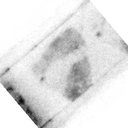[Duraplasty with Neuropatch versus autologous fascia lata for Chiari I malformation with syringomyelia: a comparative study].
Palabras clave
Abstracto
OBJECTIVE
To evaluate the outcome and postoperative reaction of dural substitute (Neuropatch) applying in the treatment of Chiari I malformation(CMI) associated with syringomyelia(SM).
METHODS
Forty patients of CMI associated with SM were operated in our department from Jul. 2002 to Jul. 2004. All patients underwent posterior cranial fossa decompression and duraplasty. They were divided into two groups, 20 patients being repaired with Neuropatch (Neuropatch group), and the others with autologous fascia lata (fascia group). There were 6 males and 14 females in Neuropatch group and 10 males and 10 females in fascia group. The operations were performed under general anesthesia via suboccipital approach and the extent of posterior cranial fossa decompression ranged from 20 cm(2) (5 cmx4 cm) to 35 cm(2) (5 cmx7 cm). The removal of posterior arch of atlas depended on the extent of tonsillar herniation, and the dura was opened in Y shape. The Neuropatch was cut into triangular shape, and the same sized autologous fascia lata was used in fascia group. The patches were sutured tightly to the dura matter in each group. The incision was closed layer by layer and drainage was used, if necessary. Antibiotics and hormone were routinely used. The duration of operation, postoperative fever were evaluated, the outcome of the operation was evaluated by Tator scale, and the data were analyzed with statistic software SPSS 10.0.
RESULTS
There were12 patients (60%) who suffered from postoperative fever in the Neuropatch group, and 9 patients (45%) in the fascia group(chi(2)=0.902,P=0.342). Seventeen patients in each group were improved postoperatively. The duration of operation, postoperative fever and antibiotics used were compared between the two groups. No significant difference was found, but the duration of postoperative fever and the time of hormone used were different. There were no postoperative infections that occurred after the follow up for 1 to 2 years, except for one patient in fascia group who developed infective granuloma and recovered later by treatment.
CONCLUSIONS
Neuropatch is a useful dural substitute for the repair of dural defects in the treatment of CMI associated with syringomyelia.



